Lectures By Ingmar Weber On Computational Social Science
Ingmar Bergman visited the HSE campus in St Petersburg on March 16th, 2015 at the SESL. He met with students and gave two lectures at both campuses, on Sedov Str. and Kantemirovskaya Str. His main goal was to tell the students about the new inter-disciplinary research field, Computational Social Science (CSS). CSS provides a link between the theoretical base of social sciences and computerized methods of analysis for quantitative data.
Ingmar Weber studied in Germany, worked in Spain, and currently conducts studies in a research centre in Qatar. Weber's main interest lies in explaining human social behaviour with the help of computer technologies. For his research he uses data obtained from various social networks. It should be noted that Weber has vast experience in working together with many researchers from various fields of research: demographers, sociologists, experts in political sciences, and economists.
In his lectures, he outlined the advantages of CSS over traditional sciences (e.g., sociology and economics), and described the rationale and ways of working with data. The main advantage offered by CSS lies in the fact that the researcher gets an opportunity to work with a vast amount of information, which grows and gets updated every day. Researchers can obtain their data from a range of information sites, social networks, survey resources and numerous databases. The main goal of online surveys is processing and analysing the collected data.
From where can one access this data? Weber mentioned several of his main sources: Google Trends, Google Books, Followerwonk, Yahoo Answers. These sites produce a huge amount of information; for example, who’s liked more – cats or dogs? In addition, social networks provide a valuable source of data. Weber's team were analyzing tweets on Twitter in order to examine the problem of obesity.
Ingmar answered students' questions about CSS, about his own projects and Qatar, and discussed some of students’ projects. The main idea was simple: if a tweeter eats a sandwich, they would tweet about it. Following this premise, the researches collected tweets where the authors were mentioning food (using keywords for specific products), and identified their authors. After that, the researchers analyzed the profiles of these authors and of their friends on social networks. This allowed them to identify the categories of the population susceptible to obesity.
By Denis Bulygin

